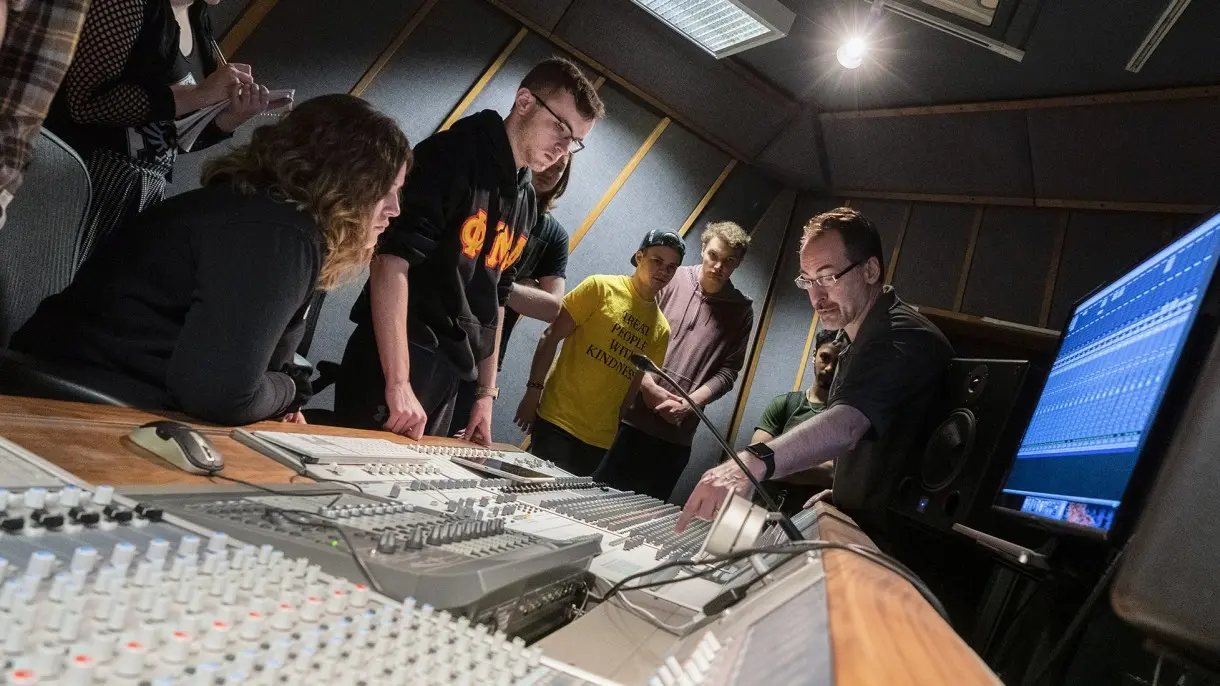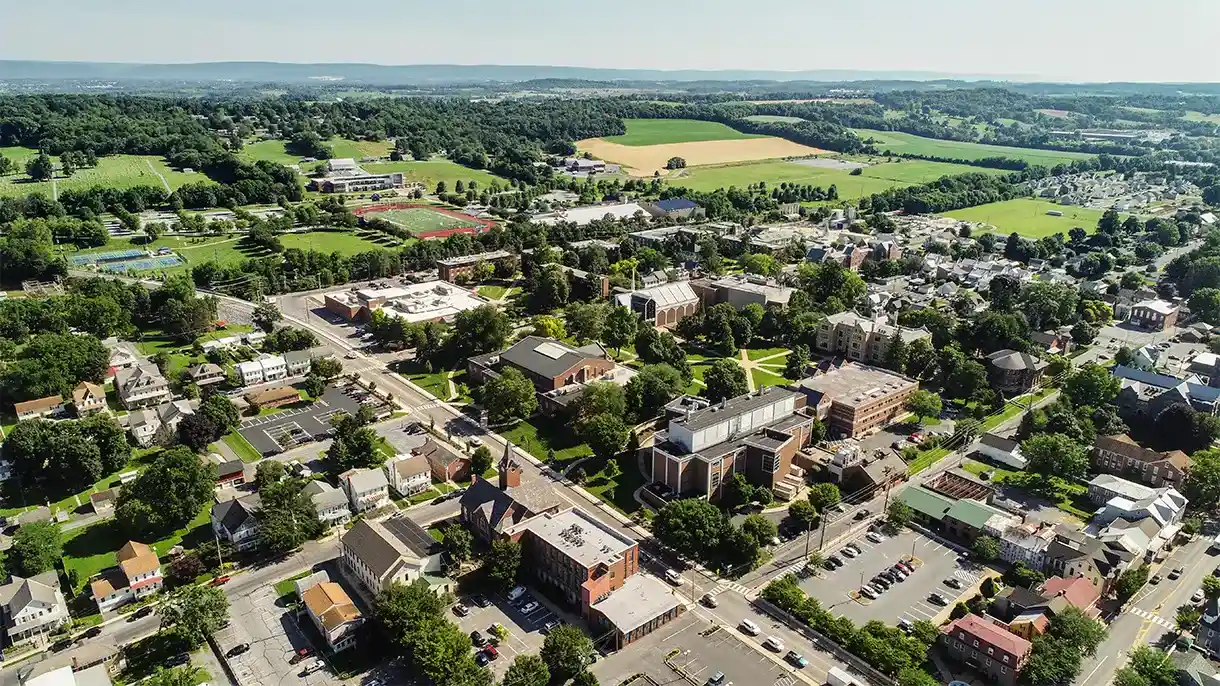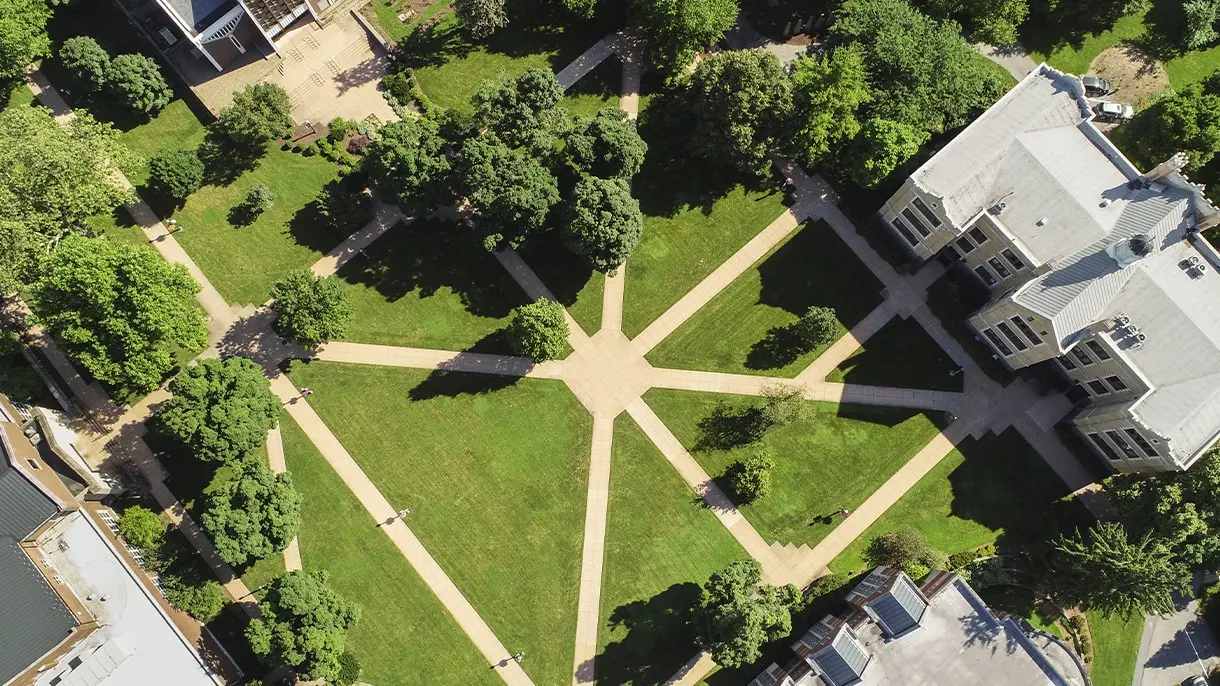Mund College Center & LEED Certification
The existing Mund College Center building, built in 1957, serves as the main College dining facility and kitchen. In 1969, the building was enlarged and a theater space and new lobby area were added. In 2007, the College decided that a larger dining hall and different support functions were needed. Instead of constructing a new building, the College agreed to renovate the existing building to make it the first LEED certified building on campus.
LEED stands for Leadership in Energy and Environmental Design and is a rating system for sustainable buildings established by the US Green Building Council (USGBC). The rating system distinguishes between six different categories: Sustainable Sites, Water Efficiency, Energy and Atmosphere, Materials and Resources, Indoor Environmental Quality, and Innovation and Design Process. Additional points can also be achieved through regional credits, which highlight the importance of certain credits within a particular region. The reduction of water usage in our area would be one example of a regional credit. The system distinguishes between credits and prerequisites. Prerequisites, such as not smoking within the building or within 25 feet of any entrances or air intakes, using 20% less water, or storing and collecting recyclables, are required to be fulfilled in order to be certified. These are different from credits, which the team can select the ones it wishes to fulfill. Only the credits contribute to the points and the level of certification. Projects can achieve a rating of certified, silver, gold, or platinum.
To achieve the desired LEED certification, discussing the credits between all team members early on during the design of the project is highly recommended. For the Mund Center, the LEED administrator conducted a LEED workshop with the entire design and construction team to discuss different sustainable approaches and identify the LEED credits that seemed achievable or desirable during the early stages of the design of the project. The team focused on these credits during the next phases and especially during the construction.
The renovation started in 2010 and finished in the spring of 2012. The building now has 78,200 sft, 18% of which is new construction. Of the entire existing building, 52% was renovated. The only area on the first floor that was not renovated was the theater, while a large area on the ground level was kept as existing. Keeping existing structures and making them more efficient is one of the greenest strategies because it uses less resources. These methods are true to the definition of sustainability, which stands for keeping resources available for the next generations.
Lebanon Valley College’s Mund College Center has been awarded LEED® Silver Certification. LEED is the foremost program for the design, construction, and operation of green buildings. More than 58,000 commercial and institutional projects are currently participating in LEED, comprising more than 10.7 billion square feet of construction space in all 50 states and more than 140 countries.
The following components of the Mund renovation and addition were included in LVC’s application for LEED certification:
- The new materials used for the renovation and addition were carefully selected according to their regional availability (within 500 miles of the project) and their recycled contents. Altogether, 12 percent of the materials were extracted and manufactured within a 500-mile radius, including concrete, CMU, and drywall. The materials also have a recycled content of more than 22 percent, including steel, drywall, carpet, ceiling tiles, and bathroom partitions.
- The College has a recycling plan for the entire campus. Paper, glass, plastics, and metals are collected in designated waste cans and go to a dumpster on site. From there, it goes to a collection dumpster at the edge of campus where a contracted recycling firm picks it up and sorts the materials at their site. The College collects and bales all corrugated cardboard from across campus, including the food service- and bookstore-generated cardboard, for sale to a cardboard recycler. In addition, the Mund Center kitchen pulper minimizes the impact of food waste.
- The College contracted with a green power provider (Constellation Energy) for all campus electricity consumption for three years. This energy is 100 percent derived through wind energy.
- A green cleaning program ensures that no cleaning agents are used that could affect air quality. The cleaning staff is trained on a regular basis to follow the guidelines and use only qualifying products.
- White membrane roofing minimizes the heat island effect during sunny summer days. The membrane reflects the sun’s rays and lowers the roof temperature. This helps with the heat island effect and makes the building more energy efficient.
- Renovating the building on the existing site minimized the disturbance of other areas, as did bringing in new infrastructure.
- The building saves 35 percent of water compared to a base building by using low-flow fixtures, waterless urinals, and hands free electric sensor activated flush valves for all toilets.
- During the construction process, the contractor collected all waste in a dumpster at the site. The recycling company picked up the dumpster and brought it to their site. Here, the dumpster was weighed and the company’s employees picked through and sorted all material to be recycled as cardboard, drywall, metal, clean fill, shingles, and wood. This material was then placed into specific containers and sent to an outside market. Eighty-six percent of the waste was recycled through this process, resulting in only 14 percent of all construction waste going into the landfill.
Rain gardens manage storm water by delaying the water runoff into the municipal storm water system. Native plants were selected to withstand the dry summer months without irrigation. These native, drought-resistant plantings help reduce water consumption.


